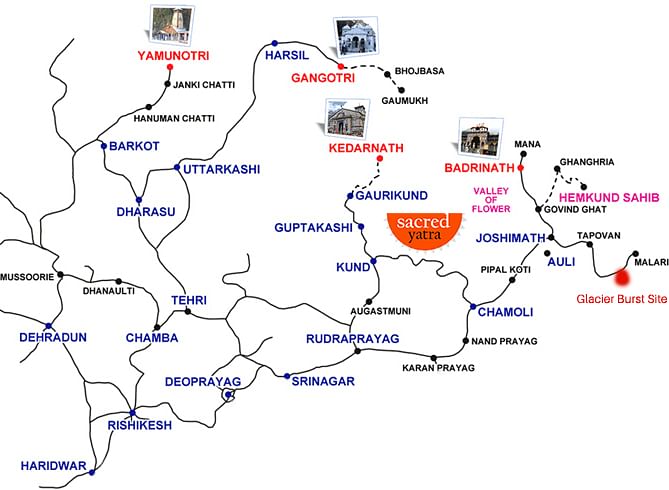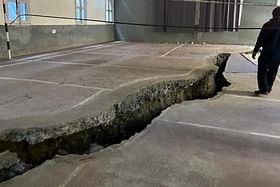The story so far: Due to land subsidence, roads and over 600 houses in Joshimath – the gateway town to the Badrinath temple – developed cracks, causing panic and protests among the local population.
Swarajya explains the events unfolding in Joshimath – India’s ‘sinking town’.
Where is Joshimath located?
Nestled in the Chamoli district of Uttarakhand, the sacred town of Joshimath is located on the Rishikesh-Badrinath National Highway (NH-7) at a height of 6150 feet (1875 m).

It is home to one of the four mathas or monasteries established by Adi Shankaracharya in the four cardinal directions – Sringeri in Karnataka, Dwarka in Gujarat, Puri in Odisha and Joshimath near Badrinath in Uttarakhand.
The town of Joshimath is also nicknamed as Jyotirmath and is the winter seat of Lord Badri, whose idol is brought down from Badrinath temple to Vasudeva temple at Joshimath. This holy town is revered by the Hindus for being an important pilgrimage center of the country.
Joshimath is also of great strategic importance to the Indian armed forces and is home to one of the Army’s most important cantonments.
What is unique about geology of Joshimath?
Joshimath is situated in the middle slopes of the hill bound by Karmanasa and Dhaknala on the west and the east respectively, together with Dhauliganga and Alaknanda on the other sides.
The town lies on an ancient landslide, resting on a deposit of sand and stone, not rock. The rivers Alaknanda and Dhauliganga play their part in triggering landslides, by eroding the river banks and mountain edges.
The subsidence, a gradual settling of the land surface due to the removal or displacement of subsurface materials, has induced structural defects and damage observed in almost all areas of Joshimath, according to the reports.
Why is Joshimath sinking?
A survey by Dehradun-based Wadia Institute of Himalayan Geology conducted in 2022 found that gneissic rocks in the area are highly weathered, have low cohesive value, and are prone to high pore pressure when saturated with water, especially during monsoons.
The three main factors behind these landslides are Joshimath’s vulnerable foundations, as it was developed on the rubble of an earthquake-triggered landslide more than a century ago, its location in seismic zone V, which is more prone to earthquakes, plus gradual weathering and water seepage that reduce the cohesive strength of rocks over time, director of the Wadia Institute of Himalayan Geology Kalachand Sain told PTI.
However, the ongoing crisis in Joshimath is primarily because of anthropogenic activities.
With manifold increase in population, coupled by the tourist landfall, the town has seen unabated growth of hotels and other such places which have made the slopes highly unstable in the last couple of decades.
What is being done to alleviate the crisis?
According to data provided by the Chamoli district administration, there are a total of 4500 buildings in Joshimath and 610 of these have developed huge cracks.
As such, Joshimath has been declared a landslide-subsidence zone and over 60 families living in uninhabitable houses in the sinking town have been evacuated to temporary relief centers.
Further, the National Remote Sensing Centre, Hyderabad and the Indian Institute of Remote Sensing, Dehradun have been asked to conduct a study of Joshimath through satellite imagery and submit a detailed report with photographs.
The full-fledged commission of the National Disaster Management Authority (NDMA) and the Border Management Secretary is also visiting Joshimath today to advise the State government on short- and long-term actions.
What next?
Incidents of land subsidence in Joshimath were reported in the 1970s too.
A panel set up under the chairmanship of Garhwal Commissioner Mahesh Chandra Mishra had submitted a report in 1978, suggesting some measures – conservation of the existing trees and plantation of more trees and that boulders on which the town is located should not be touched. However, these measures were never followed.
While the priority at present is to evacuate the affected people to safety, the administration should explore long-term measures to deal with the situation ranging from reconstruction to retrofitting.


